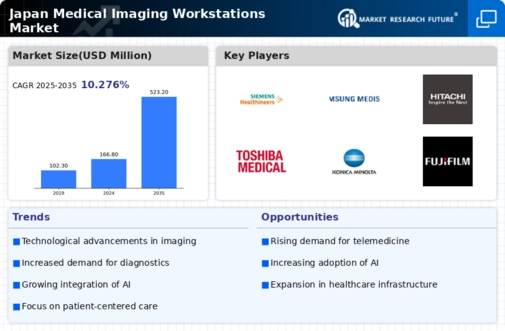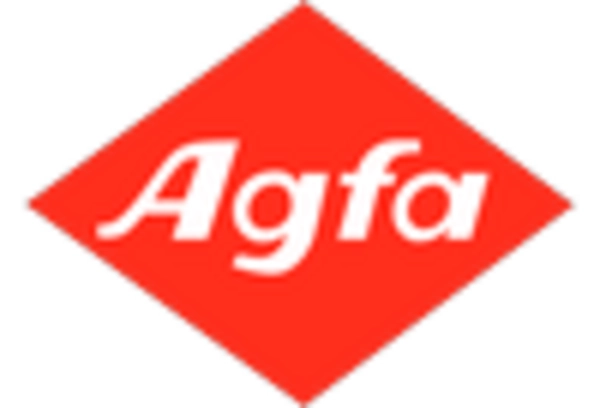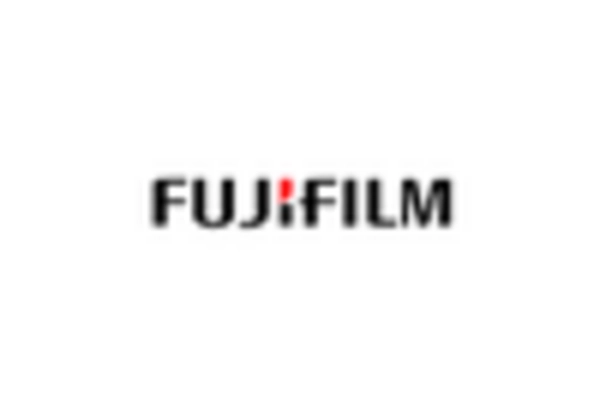Growing Aging Population
Japan's demographic landscape is characterized by a rapidly aging population, which significantly impacts the medical imaging-workstations market. As the elderly population increases, the prevalence of age-related health conditions, such as cardiovascular diseases and cancers, rises correspondingly. This demographic shift necessitates enhanced diagnostic capabilities, leading to a higher demand for medical imaging technologies. In 2025, it is estimated that the market will expand by 12% as healthcare facilities invest in advanced imaging workstations to cater to the needs of older patients. The growing aging population thus serves as a critical driver, compelling healthcare providers to adopt more efficient imaging solutions.
Focus on Patient-Centric Care
The medical imaging-workstations market is increasingly influenced by a shift towards patient-centric care in Japan. Healthcare providers are prioritizing patient experience and outcomes, leading to the adoption of technologies that enhance the diagnostic process. This focus on patient-centricity encourages the development of workstations that facilitate faster image processing and improved communication between healthcare professionals and patients. In 2025, it is anticipated that the market will grow by 8% as facilities invest in user-friendly imaging solutions that align with this trend. The emphasis on patient-centric care thus serves as a vital driver, shaping the future of medical imaging technologies.
Increased Healthcare Expenditure
Japan's healthcare expenditure has been on an upward trajectory, which positively influences the medical imaging-workstations market. The government has been increasing its budget allocation for healthcare services, aiming to improve the quality of care and access to advanced medical technologies. In 2025, healthcare spending is expected to reach approximately ¥50 trillion, with a significant portion directed towards upgrading medical imaging facilities. This financial commitment indicates a robust market environment for imaging workstations, as hospitals and clinics seek to enhance their diagnostic capabilities. Consequently, the increased healthcare expenditure is likely to drive the demand for innovative imaging solutions.
Rising Demand for Diagnostic Imaging
The medical imaging-workstations market is witnessing a notable increase in demand for diagnostic imaging services in Japan. Factors such as heightened awareness of preventive healthcare and advancements in imaging technologies are contributing to this trend. As patients become more proactive about their health, the need for accurate and timely diagnostics is paramount. In 2025, the market is projected to grow by 10% as healthcare providers expand their imaging capabilities to meet this rising demand. This growth reflects a broader shift towards more comprehensive diagnostic services, necessitating the deployment of advanced workstations that can handle complex imaging tasks.
Technological Advancements in Imaging Modalities
The medical imaging-workstations market in Japan is experiencing a surge due to rapid technological advancements in imaging modalities. Innovations such as 3D imaging, MRI, and CT scans are becoming increasingly sophisticated, enhancing diagnostic accuracy. The integration of high-resolution displays and advanced software solutions is enabling healthcare professionals to interpret images with greater precision. As a result, the demand for advanced workstations that can support these technologies is on the rise. In 2025, the market is projected to grow by approximately 15%, driven by the need for improved imaging capabilities. This trend indicates a shift towards more complex imaging solutions, necessitating the development of specialized workstations tailored to these advancements.

















Leave a Comment